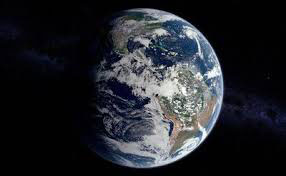Column: At the world’s edge
Taiwan

Jan 24, 2019
Have you ever stared long enough at a map that you notice those weird blotches and dotted lines? Or have you read a news story about a confict in a faraway part of the world and need some context? “At the world’s edge” will look at some of these contested regions and examine them to better elucidate why these international irregularities exist and why they endure.
Nestled just off the coast of Mainland Asia lies a seemingly typical island with a complicated and inconvenient history. This small, sweet potato-shaped island is called Taiwan and, depending on who you ask, is either a country, a province or both.
The name Taiwan means “lookout bay,” as it was once used by the Chinese Empire as a military base guarding the southern passageway to Shanghai and Beijing. And, by and large, that is exactly how the Chinese authorities treated this strange island.
The native inhabitants of the island, known as Taiwanese aborigines, are a unique people for this part of Asia, as they are more closely similar, culturally and linguistically, to the people of Indonesia, Madagascar and Hawaii than they are to Han Chinese. They lived predominantly isolated from the rest of the world, until contacts with the Dutch and Spanish prompted Chinese intervention and conquest.
Between the 17th and 19th centuries, Chinese immigrants settled on Taiwan, changing the demographics of the country. By the time Japan seized the island from China in 1895, the vast majority of the population was southern Chinese, speaking dialects such as Hokkien and Hakka, according to BBC News. This began the complex ethnic layering of Taiwanese society.
The Japanese Empire treated Taiwan as more than just a military base. Exploitation of farmers and laborers was routine, as land gradually fell into the hands of wealthy Japanese, according to BBC News. Violent repression of political dissent was not unheard of, especially once World War II began in earnest.
After defeat, Japan surrendered Taiwan and returned it to China, now a republic under the dictatorship of Chiang Kai-shek. This reunification between Taiwan and China would last only four years, however, since Chiang’s government was ultimately defeated by communist forces led by Mao Zedong.
In 1949, Chiang moved his government from the mainland to Taiwan and established his provisional capital in Taipei, in the north of Taiwan. With him, he brought millions of Chinese bureaucrats, soldiers and refugees from all across China. Thus, the final layer of Taiwan’s complex ethnic situation was formed. There now existed a Taiwanese aboriginal minority and a population of ethnic southern Chinese, who were both repressed by a sociopolitical system which placed Han mainland Chinese at the top.
For the next 50 years, Taiwan was governed as if it were Chiang’s China. The official name of the state was The Republic of China. The flag was the same as the old mainland state. The army, constitution and government were all referred to internally as Chinese.
Since democratization in the late 1980s, Taiwanese political parties began to view Taiwan as either an integral part of China which must be eventually reunified, or as an independent state. Depending on your political affiliation, this small island in Asia is either: a province of the democratic “Republic of China” (though governed as effectively independent), a province of the communist “People’s Republic of China” (with ultimate allegiance to Beijing), or a sovereign nation with its own history, culture and political interests.











